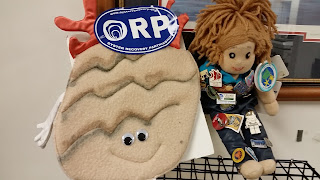It's been a while...busy busy busy. I hope you all had a fabulous Halloween and those of you in South Africa, I hope you're enjoying the sunshine. Those of you living up North, please build me a snowman with the first snow...and send me a pic of it! It would be great if it was sea-themed too!
Well, I've been very busy with shark work so I thought I'd tell you guys one or two interesting facts:
 |
| Reflective catshark eye. Photo: Ocean Explorer, NOAA |
 |
| Greenland shark eye parasite. Photo source: Real Monstrosities |
Did you know that the Greenland shark, which
is found in the seemingly lonely Arctic, can be found with a "buddy" - a
parasite that lives on the shark's eye and eats away at it. This parasite can even cause blindness, but most sharks seem unaffected by having a
permanent eye tassle!
 |
| Shortfin mako shark. |
Did you know that the Mako shark can reach speeds of up to 100km/hour AND jump out of the water repeatedly (so it's not just Great Whites that can do it!)
 |
| Jumping Mako. Source: Herald Sun |
Did you know that the Tiger shark is also known as the garbage can with fins because of all the weird things that they've found in their stomachs...like number plates!
 |
| Tiger shark. Photo: Albert Kok. |
 |
| Display of Tiger shark stomach contents at the California Academy of Sciences. Photo: iveneverdonethat.com |
So now that you know a little more about sharks, I hope you're even more fascinated with them.
Have a great week Sea Fans and chat soon!
Cheers
Abby
}( *)8




















%2BPbsouthwood%2Bat%2Bold%2Bwikivoyage%2Bwts.JPG)












